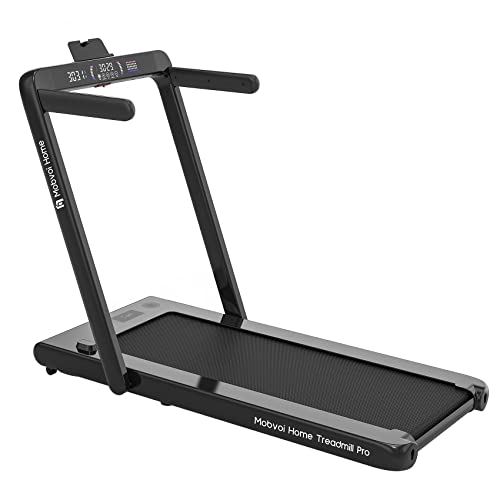Treadmills: A Comprehensive Guide to Understanding Their Functionality, Benefits, and Appropriate Selection
Introduction
Treadmills have become a staple in contemporary fitness routines, both in homes and fitness centers worldwide. They provide a practical and effective way to preserve cardiovascular health, increase endurance, and help in weight management. This article checks out the different types of treadmills, their benefits, features to think about when acquiring, and some FAQs to guide users in making notified choices.
Types of Treadmills
When it comes to choosing a treadmill, it is crucial to comprehend the different types offered in the market. Here are the primary categories:
1. Handbook Treadmills
- System: These treadmills have a basic design and rely on the user's efforts to move the belt.
- Pros: More budget friendly, quieter operation, no electrical energy required.
- Cons: Limited functions, may not provide the very same variety of workout strength.
2. Motorized Treadmills
- System: Powered by a motor that drives the belt, permitting users to walk or perform at a set rate.
- Pros: Greater range of speeds and inclines, equipped with various functions such as heart rate displays and exercise programs.
- Cons: More pricey and may require more maintenance.
3. Folding Treadmills
- System: Designed for those with limited space, these treadmills can be folded for simple storage.
- Pros: Space-saving, often motorized, flexible features.
- Cons: May be less long lasting than non-folding designs.
4. Industrial Treadmills
- Mechanism: High-quality machines developed for usage in gyms and gym.
- Pros: Built to stand up to heavy use, advanced features, typically include warranties.
- Cons: Pricey and not perfect for home usage due to size.
5. Curved Treadmills
- System: An unique style that enables users to move the belt using their own energy.
- Pros: Offers a more natural running experience, promotes much better running form.
- Cons: More costly and can be noisier.
| Treadmill Type | Pros | Cons |
|---|---|---|
| Handbook | Inexpensive, no electrical power required | Limited features |
| Motorized | Variety of speeds, advanced functions | Maintenance needed |
| Folding | Space-saving, frequently motorized | May lack sturdiness |
| Industrial | Built to last, professional-grade functions | Costly |
| Curved | Natural running experience, promotes great type | Higher rate |
Advantages of Using Treadmills
Treadmills provide numerous benefits that can add to one's total health and wellness goals. A few of these advantages consist of:
- Convenient Workouts: Treadmills permit users to work out inside regardless of weather.
- Cardiovascular Health: Regular usage can improve heart health by increasing stamina and promoting healthy circulation.
- Weight Management: Effective for burning calories, which helps in weight loss and management.
- Personalized Workouts: Users can manage speed, slope, and period to develop personalized exercise experiences.
- Security: Treadmills offer a predictable surface area, reducing the risk of falls compared to outside running.
- Multifunctional: Many treadmills featured functions like heart rate monitors, exercise programs, and even entertainment systems.
Selecting the Right Treadmill
When choosing a treadmill, possible buyers need to consider numerous key elements:
Features to Consider:
- Motor Power: Typically measured in horse power (HP), a motor strength of at least 2.5 HP is suggested for serious runners.
- Belt Size: A longer and larger belt accommodates different stride lengths, providing comfort during exercises.
- Slope Settings: Adjustable incline functions mimic outdoor hill running and can increase exercise intensity.
- Weight Capacity: Ensure the treadmill can support the user's weight for security and longevity.
- Console Features: Look for easy to use control panels, exercise programs, and Bluetooth compatibility for streaming music or other functions.
Budget Considerations
- Under ₤ 500: Entry-level manual treadmills ideal for casual walkers.
- ₤ 500 - ₤ 1,500: Mid-range motorized treadmills that provide more functions and much better resilience.
- ₤ 1,500 - ₤ 3,000: High-end models with innovative innovation, larger motors, and longer warranties.
- Over ₤ 3,000: Commercial-grade treadmills perfect for regular use in fitness centers or training centers.
Frequently Asked Questions (FAQs)
1. How often should I use a treadmill?
It is recommended to use a treadmill a minimum of 3 to 5 times a week, including numerous intensity levels for best outcomes.
2. Can I drop weight by utilizing a treadmill?
Yes, constant usage of a treadmill can contribute to weight loss, especially when integrated with a well balanced diet and strength training.
3. What is the best speed to walk on a treadmill for beginners?
A speed of 3 to 4 miles per hour is an ideal variety for beginners. It's vital to begin slow and gradually increase speed as convenience and endurance enhance.
4. Do I need to utilize a treadmill if I already run outdoors?
Using a treadmill can provide fringe benefits, such as regulated environments and varied workouts (incline, periods) that are not always possible outdoors.
5. How do I keep my treadmill?
Regular upkeep consists of oiling the belt, cleaning the deck and console, and inspecting the motor for optimum efficiency.
Treadmills are necessary tools for those wanting to improve their fitness levels in a controlled and convenient way. With different types readily available, understanding their features and benefits is vital for making a notified purchase. By thinking about personal exercise needs, area schedule, and budget restrictions, people can find the most suitable treadmill that fits their lifestyle. Integrating Buy A Treadmill into a well balanced fitness regimen can result in enhanced health outcomes and an enjoyable exercise experience.

